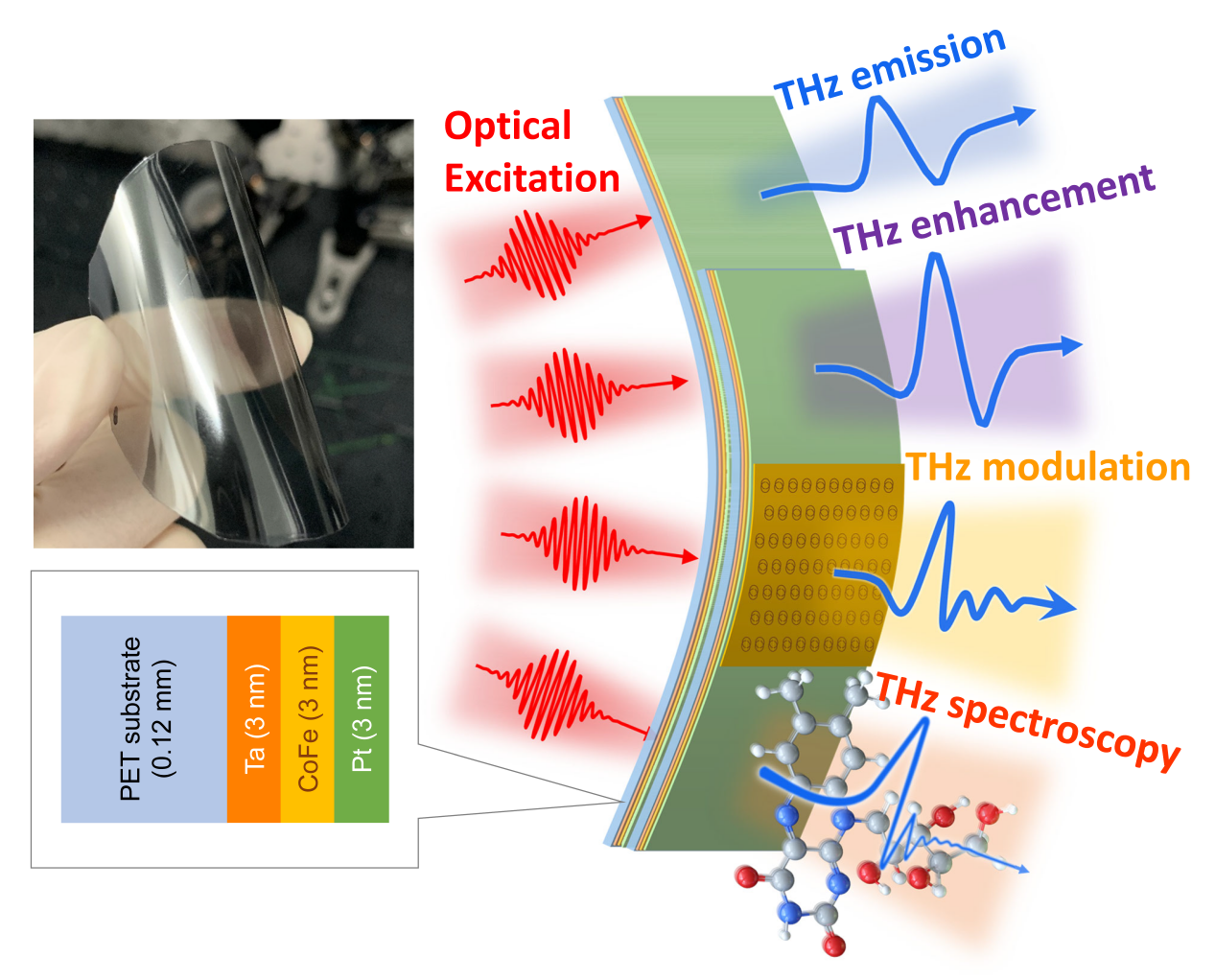Terahertz waves generally refer to electromagnetic waves with frequencies ranging from 0.1 THz to 10 THz, between microwave and infrared. Because terahertz waves have good temporal and spatial coherence, low photon energy, large transmission capacity and strong penetration ability, they have irreplaceable scientific and application potential in the fields of precision spectroscopy, radar imaging, biomedicine, national defense security, communication sensing and so on.
Terahertz radiation source is the key to the development of terahertz science and technology. Traditional terahertz radiation sources usually have disadvantages such as expensive materials, large volume, complex system, and limited ability to regulate optical parameters such as bandwidth and polarization of terahertz radiation pulses. Efficient, flexible and broadband terahertz generation and optical parameter regulation is an important research direction in terahertz science and technology. In recent years, a terahertz (THZ) radiation source based on ferromagnetic/non-magnetic heavy metal heterostructures with nanoscale thickness has attracted extensive attention. The terahertz generation mechanism based on ferromagnetic/non-magnetic heterostructures is mainly due to the superfast inverse spin Hall effect, where the light-induced spin flow is replaced by the superfast charge flow, thus radiating the terahertz coherent pulse. Although its radiation intensity is comparable to that of millimeter-thick optical rectifier crystal, how to further improve the field intensity of terahertz radiation pulse and strengthen the regulation ability of terahertz radiation pulse remains to be studied.
Recently, the member of Shanghai university of technology institute of photoelectric song-lin zhuang leadership of terahertz technology innovation research and fudan university, Shanghai university, scientists at the university of wollongong, Moscow university cooperation, study the polyethylene terephthalate (PET) flexible substrate preparation of Pt/CoFe/Ta ferromagnetic/non magnetic heterostructure spin optoelectronics terahertz radiation source. It is found that the flexible terahertz radiation source has the advantages of high emission efficiency, good stability, low cost, adjustable polarization and flexible bending. Importantly, the researchers innovatively propose a cascade terahertz radiation source based on the flexible PET/Pt/CoFe/Ta ferromagnetic/non-magnetic heterostructure, which not only effectively improves the field intensity of the terahertz pulse radiation, but also can effectively regulate the time domain waveform of the terahertz pulse radiation by combining with the superstructural surface. The results further demonstrate that the cascaded spin-optoelectronics terahertz radiation source is perfectly suitable for terahertz time-domain spectral analysis. The researchers believe that the cascaded flexible PET/STE can be used as a basic module, showing strong research and application value in the generation and regulation of terahertz radiation, and is expected to be integrated into the future chip, compact terahertz devices and spectral systems.
The study, titled "Cascaded Amplification and Manipulation of Terahertz Emission by Flexible Spintronic Heterostructures," Published in Laser & Photonics Reviews (Section 1).
This work was supported by the Science Center Project of the National Natural Science Foundation of China (61988102).

Figure. 1 :Schematic diagram of terahertz radiation cascade amplification and its regulation based on flexible ferromagnetic/non-magnetic heterostructures